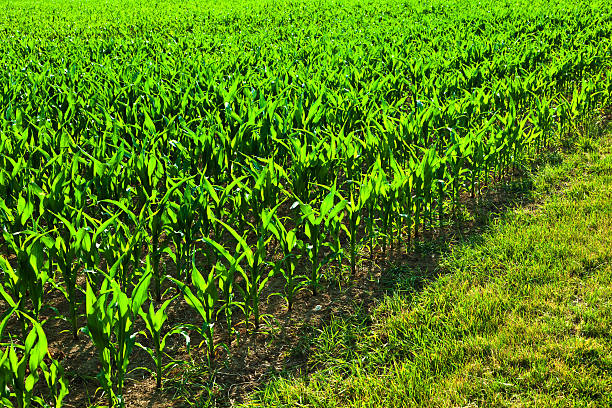
There are a lot of factors to take into account when starting a corn farming business or expanding your current operations. One important consideration is knowing how much corn seed you’ll need to cover your particular acreage. So how many acres can be planted with a bag of seed corn? The response isn’t exactly clear-cut and depends on a number of variables. To help you see things more clearly, let’s take a closer look at this subject.
Recognizing Corn Population and Seed Corn Bag Sizes
- Buying seed corn might not seem like a difficult process, but it involves more than just picking up a bag and heading out. Planting strategy can be significantly impacted by knowing the size of the bag and what it represents in terms of corn population. Bags of seed corn usually come in two basic sizes: ones containing 80,000 kernels or 50 pounds. But because seed density and size vary, the weight isn’t necessarily the same everywhere.
- One more important factor that is entwined with your seed bag size is the corn population, or the quantity of corn plants per acre. A typical recommendation for maize populations is approximately 30,000 plants per acre, yet this is not a uniform number. What variety you select, the fertility of your soil, and the amount of moisture in the soil can all affect your optimal corn population. These elements will have a big impact on how much ground the seed corn bag can cover.
- Consider the relationship as a balancing act between the population of corn and bag size. In order to protect the health of your crop and increase productivity, you must find the ideal balance. Thus, one of the most important aspects of your corn farming experience is realizing the effects of seed corn bag sizes and corn population. It’s all about making an informed decision when purchasing seed corn and calculating how many seeds you’ll need for your particular field circumstances. It’s all about knowledge and precision, two things that are necessary for productive farming.
Corn Population and Seeding Rate?
- At first glance, the relationship between seeding rate and maize population may appear a little complicated. But in the case of corn cultivation, these two variables are very closely related.
- Your seeding rate is the amount of seed you plant per acre. You establish your seeding rate as a farmer with the goal of achieving a particular corn population. This is where things start to get interesting, though: while connected, seeding rate and corn population are not exactly the same.
- The main difference between the two is that not all seeds develop into fully developed plants, which is a fundamental truth of farming. Actually, for a variety of reasons, some of your seeds won’t sprout. These can include illnesses, pest infestations, and poor weather patterns.
- Therefore, farmers typically set their planting rate slightly higher than their planned corn population as a buffer against these potential losses. They do this in an effort to guarantee that they reach their target corn population even after taking non-emerging seeds into consideration.
- Therefore, knowing how corn population and seeding rate interact is crucial to the overall success of your corn farming operations. With this information, you can manage possible roadblocks, plan your seeding carefully, and eventually direct your crop toward maximum productivity.
Common Seeding Rates and the Effects on Acreage
While navigating the huge corn-farming plains, we frequently come across a variety of seeding rates. These rates typically vary from 28,000 to 34,000 seeds per acre. However, what does this mean for your land and how does it apply to your agricultural methods?
- Now let’s illustrate this. Let’s say your goal is a corn population of approximately 30,000 plants per acre and you estimate that the emergence rate will be approximately 95%. With this information, you will determine a sowing rate of around 31,600 seeds per acre.
- You may ask, though, why this particular seeding rate. Not every seed will successfully germinate and grow into a plant, as we have previously discussed. A number of problems, such as pest infestations, illnesses, or unsuitable weather, may prevent some seeds from sprouting. You increase your seeding pace to make up for this anticipated loss and to attain the desired corn population.
- As a result, the intended corn population is directly proportionate to the seeding rate, and the acreage is indirectly proportional. An acreage that a bag of seed corn may plant decreases with increasing seeding rate and vice versa. Remember that although this relationship appears straightforward, it is influenced by a multitude of other factors, including the type of hybrid you choose, the fertility of the soil, and the availability of moisture.
- To put it simply, knowing how common seeding rates will affect your acreage will help you plan your planting more effectively and get the most out of your seed corn bags. Just keep in mind that there are no hard and fast rules in this area, and your particular field circumstances may affect the ideal seeding rate. Thus, if you pay attention to your farming surroundings and make wise choices, you should have no trouble harvesting corn successfully!
Factors Affecting the Rate of Seeding
- One does not simply pick seeding rates out of thin air. Actually, there are a number of factors to consider while figuring out the best seeding rate for your corn crop. The yield potential and population response of your selected hybrid are two of these essential components. Certain hybrids are excellent producers that thrive in denser populations and have remarkable output potential. For these hybrids to reach their full potential, larger seeding rates are usually required.
- The kind and quality of your soil is another important factor in this game. A higher seeding rate may be possible if your field is rich and fruitful. To prevent crowding and resource competition, a lower seeding rate may be preferable if you’re working with less fertile soil.
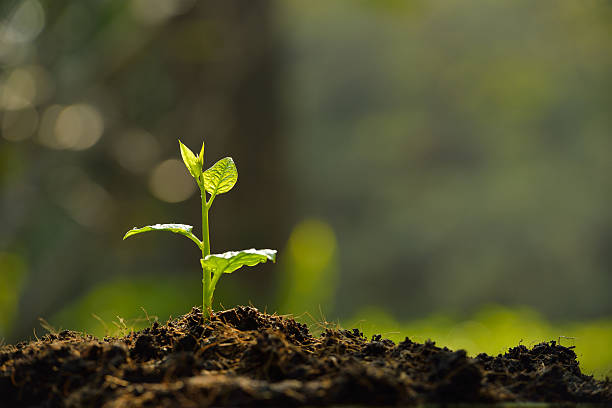
- Another thing to think about is how your field has performed in the past. Has your farm previously yielded abundant crops at greater seeding rates? Or has the weight of too many plants caused it to struggle? The responses to these queries can help you choose the right seeding rate.
- Not to be overlooked is the weather. The weather can have a big impact on your seeding rate because Mother Nature can be so erratic. Fields in locations with regular rainfall may benefit from a higher seeding rate, whereas those that are prone to drought may need a lower one.
- Recall that every field is a distinct entity with peculiarities and traits of its own. Respecting these uniqueness is crucial while figuring out the seeding rate. You can maximize the potential of your crop and make sure that every seed you plant has the highest chance of thriving by doing this.
Precision Agriculture’s Function in Seed Planting
Precision agriculture represents a new age in farming brought about by the advent of technology. This creative method has had a big influence on a lot of farming techniques, such planting seeds. Using cutting-edge technologies to precisely control the seeding process, including as GPS mapping and real-time monitoring systems, is known as precision agriculture.
Variable rate planting is a key component of precision agriculture. This approach entails dynamically modifying the seeding rate in accordance with the unique circumstances of various field zones. In essence, your seeding apparatus may adjust the planting rate in real time, depending on GPS-derived information about the particular features of your field. This means that your property receives just the right amount of seeds per square foot for it to grow and thrive.
With variable rate planting, the one-size-fits-all method is done away with and is replaced with a more specialized plan that honors the unique characteristics of each field. Numerous advantages, including maximum potential yields and less seed waste, come with this strategy.
Consider a situation
Consider a situation in which some areas of your field could yield more because of their better soil or appropriate moisture levels. These zones receive a greater seeding rate with variable rate planting, allowing them to reach their maximum yield potential. Conversely, fewer seeds are distributed to regions with lesser fertility or less favorable environmental conditions, avoiding waste and overcrowding.
- This adaptability in adjusting the planting rate improves sustainability as well as productivity. Precision agriculture helps conserve resources by cutting waste, which makes your farming operation more ecologically friendly.
- Precision agriculture is brilliant when it comes to seed planting because it combines technology and farming expertise to get the best possible outcomes. It makes certain that each seed has an equal chance to grow by enabling a more precise estimation of the seeding rate. You’re therefore well-equipped to maximize the use of your seed corn bags and get one step closer to a plentiful corn crop with this technology at your disposal!
Conclusion
- As we come to an end of this illuminating voyage, it is evident that figuring out how many acres a bag of seed corn can plant is not a straightforward procedure. Instead of a static answer, the solution is a dynamic equation that balances several factors. We now know that important variables include the size of the seed corn bag, the targeted corn population, emergence rates, and the particular hybrid of corn selected.
- The first estimates are mostly determined by the size of your seed corn bag and the particular corn hybrid you choose. Both weight and kernel count can be used to evaluate a bag of seed corn, and both has a bearing on the product.
- However, there’s still more complication because of your goal corn population and anticipated emergence rate. Recall that the yield is determined by the corn plants that survive rather than merely the seeds that are sown. Therefore, a more practical and effective planting strategy can be implemented by projecting an appropriate emergence rate.

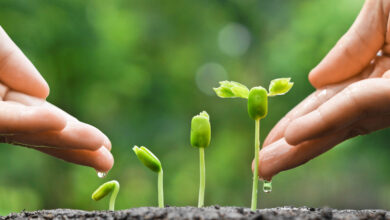

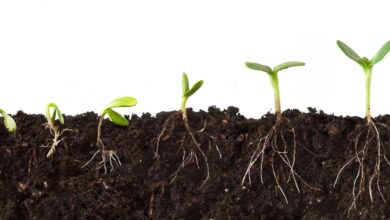
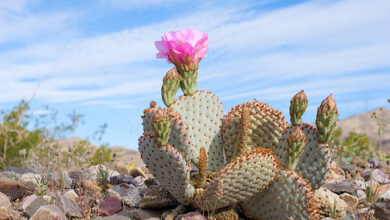
Hi Dears,
I am not understand what are you say.
Contact us,
shineseoagency@gail.com
website: http://www.shineseoagency.com
WhatsApp No: +92 3054067093